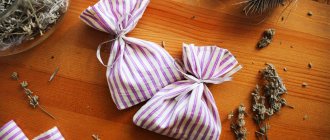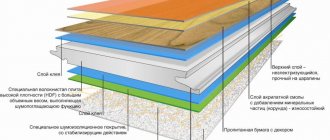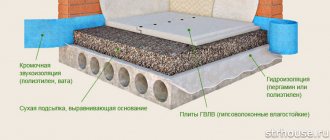Learn how to sew your own kitchen towels. These hand-sewn products will appeal to housewives who like their home to be decorated in an original way.
No housewife can do without oven mitts and towels in the kitchen. Keeping your hands clean is important, but that's not the only function they serve. Towels also play a big role in the decor of the room. The room will look much more cheerful if you sew such napkins with your own hands from a suitable fabric with different decorations in the form of ribbons, embroidery, appliqué, patches with bright patterns.
How to sew a beautiful kitchen towel with your own hands as a gift for beginners: ideas, photos
In fact, sewing a towel is not such a difficult job. For the process you will need everything: imagination, material, threads, scissors, machine, needle. If you want it to look different than usual, then you can embroider a real work of art using different colored threads on a regular waffle base or linen fabric.
Even such scraps of colored material, as in the image below in the form of an applique and lush frills at the bottom of the towel, will decorate your kitchen with a festive atmosphere for the New Year.
DIY towel
In almost any home in the closet you can find an old dress made of cotton fabric, which a fashionista will no longer wear, and maybe also pieces of braid and lace. This material will make a towel, and more than one, which can be sewn in the form of a fluffy sundress, as in the photo below.
Kitchen towels made of colored fabric
Instructions for sewing a regular kitchen towel:
- Take the material. Cut out a regular rectangle measuring 62 by 32, leaving two centimeters for hems.
- To get a perfect edge, iron the edges of the product (5 mm twice on each side).
- Secure the folds with needles and stitch the edges using a sewing machine.
- If you don’t want to waste time on hems, then sew the edges with a zigzag.
Kitchen towels with ready-made applique
Decorate a kitchen towel using a wide edging
I really love cozy houses, when every little thing is chosen with love and care. But the kitchen occupies a special place in the house for me. Most often, this is where we gather with the whole family, this is where delicious dishes for my family are born. The kitchen should have beautiful tablecloths, towels and potholders, creating a truly magical atmosphere.
Today I would like to talk about one of the options for decorating kitchen towels using a wide edging. In fact, you can decorate bath towels this way. Towels with such edging look very impressive!
For work we will need: waffle fabric, fabric for edging (calico, percale, linen), thread, scissors, pins, tailor's chalk and measuring tape.
Let's take a waffle fabric with a juicy, delicious print, as a edging, calico with small polka dots, 100% cotton. I really liked the combination!
I’ll say right away that the dimensions of the waffle base and the height of the edging are arbitrary. My base will be 44 cm wide, including 4 cm (2+2) allowance for hemming the long side sections, which means the finished width of the waffle base will be 40 cm.
The length of the waffle base is 58 cm, of which there is 2 cm (1+1) allowance for stitching the edging, which means that the finished length of the waffle base without edging will be 56 cm.
We cut it. We process the long side sections of the waffle base with a hem seam with a closed cut.
I make this towel without a loop. Next, we move on to cutting out the edging from calico; we pre-decate the calico. The height of the edging in my case is 11 cm, we cut out a strip 24 cm wide (11 cm + 11 cm since the edging is double + 1 cm + 1 cm allowance for stitching to the waffle base).
The length of the edging will be equal to the width of our finished towel (after processing the side cuts) 40 cm + 4 cm (2+2) two centimeters for processing the ends of the edging. Next, place the edging face up. Find the middle of the long cut of the edging and the middle of the short, raw cut of the waffle base.
We lay the waffle fabric and the edging face to face, cut edge to cut edge, matching the middles.
We begin to roll the base of the towel into a roll from the free cut to the edge combined with the edging fabric.
After the roll has been completely rolled up, cover it with the second free cut of the edging fabric.
Since we are making the edging on the waffle fabric, there is one caveat: the waffle fabric has a checkered finish, which means we need to stitch the edging in such a way as not to visually violate the integrity of this finish. I will show you now. This may not be important for some, but observing this subtlety significantly improves the final appearance of the product. Checked! Our line should go strictly along the line where the pin entered. Stitch at a distance of 1 cm from the cut. We included this allowance when cutting.
When you pierce this “sandwich” with pins, just follow this line.
Let's make a line.
Now we take one edge of our roll and begin to pull it out. Like this.
On the other hand, it turns out like this.
Let's move on.
We steam the edging on both sides, thoroughly smoothing the place where it is stitched with the base.
Remember what I said about the strictness of the lines in the manufacture of waffle fabric? Look, the line on the cells of the waffle fabric, both from the front and from the back, runs parallel to the edging
Next, we proceed to processing the short open side cuts of the edging. We left an allowance of 2 cm on each side. Cut seam allowances to 1.5 cm.
Now we smooth it out and fold it inwards with an allowance of 1.5 cm. The waffle base of the towel in the photo below is facing me inside out!
When folded, the stitch line should coincide, lie flat and neat.
When everything is smooth, turn the fabric over with the front side facing you and pin along the edge of the fold.
Crafts girls, I understand with what pain many of you are now looking at pins stuck lengthwise and not across, BUT (!) in this case I can’t do otherwise, this is how I do it as carefully as possible and this is my exception to the rule!
We lay a line at a distance of 0.2-0.3 mm.
You can simply cut the ends of the threads, or you can tuck them inside.
Process the second short section of the wafer sheet in the same way.
Enjoy your new, beautiful and bright towel!
But look at what a spectacular New Year's towel, processed in this way, turned out.
I hope the master class turned out to be accessible and understandable, and you can easily please yourself with new towels.
Warmth and comfort to your homes!
What fabric are kitchen towels made from?
Potholders and towels are in use all the time in the kitchen and that is why they quickly become unusable. Ordinary rags do not look as attractive as products sewn with love. Before you start cutting towels, you should decide on the material. The fabric should absorb moisture well and wipe dirty surfaces well.
Fabric for kitchen towels
For towels, the most commonly used material is waffle material , which is made from 100% cotton. Thanks to the small squares that are located throughout the material, its hygroscopicity improves.
To ensure that the towel washes well, use terry material . Only fabric with low pile will be convenient for sewing. You can decorate towels made from this base with an insert of another material or with embroidery or applique.
Terry towels
If you prefer bright colors, patterns and textures, then choose chintz and linen for towels. Natural fabrics are good for wiping hands and putting things in order in a room.
IMPORTANT : To make sure your towels don’t look like others, trim them with edge tape, make lush ruffles or stitch lace, and smooth the finished appliqués.
The right textile for a good product
According to the standard scheme, for the manufacture of a toilet item, terry is exclusively used if this is an option for the bathroom, and cotton is used for the kitchen “helper”. Ideally, a homemade hand towel can be made from almost any material; it is enough to determine the functional responsibilities of the item:
- In any case, it is desirable that the textiles be pleasant to the touch and absorb moisture well. It is better if the fabric has a little hairiness in order to massage the skin.
- The quality of the fabric must be high so that the finished product does not look like a dishcloth. Moreover, an item made of good fabric will last longer.
- The material should not contain designs made from rubber or textile paints. Embroidery would be an ideal option.
- It is undesirable to use products that have sequins, stones, glass elements, rhinestones, or sparkles. Such jewelry may injure your hands during use or transfer to the surface of the skin.
The choice regarding color and texture can be made in accordance with the preferences or requirements of the needlewoman.
What size are kitchen towels made?
A good housewife always has a lot of oven mitts and different towels in her kitchen. And if a woman is also a needlewoman, then almost all of her things are sewn with her own hands. Moreover, for this you only need a piece of fabric and a pattern is not necessary. After all, this practical item can be made in the form of an ordinary rectangle. There are different sizes. The most convenient towel for hands or for hot pots and pans is a cloth measuring 40 cm by 70 cm or 60 cm by 30 cm .
If there is not so much material or you are sewing a product from the remnants of old clothes, then the size of the fabric can be adjusted. Don't forget to leave one centimeter at a time to decorate the edge of the finished product.
Kitchen towel - how to sew?
How to wash it?
A dirty kitchen towel can pose a certain risk to human health. This is especially important if there are small children in the house. Various intestinal bacteria are present on the fabric surface, which can lead to infection of the entire family. Therefore, you should carefully monitor the cleanliness of products and change them on time, or use disposable paper options.
In addition to regular washing powders, you can use folk remedies that will cope just as well with stubborn stains and disinfect the fabric.
Washing and bleaching
Everyone knows that after holidays and stormy feasts there is a mountain of not only dirty dishes, but also other items, for example, tablecloths, napkins, and kitchen towels. But with simple steps you can return a clean environment to the interior. For washing you will need:
- two tablespoons of sunflower oil,
- the same amount of dry bleach,
- a little less than a glass of washing powder.
It is necessary to mix all the ingredients in a large saucepan or enamel bucket, add water and bring to a boil. After this, turn off the stove and place dirty towels inside. Keep them until the water cools completely. Then remove and rinse thoroughly. All stains should disappear.
Mustard for whitening
Another simple way to whiten kitchen towels is to use dry mustard powder. Mustard is taken in the amount of three tablespoons and diluted in three liters of water.
First of all, you should pour water into a saucepan, put it on the fire and bring to a boil. Pour mustard into the boiling liquid and wait for the mixture to settle. Then, strain it through a sieve and immerse towels in mustard water. This method not only removes stubborn stains, but also disinfects the fabric.
Laundry soap for washing
You can wash towels no less efficiently using laundry soap. Probably every home has it, but if not, then it’s easy to buy it at a hardware store. It has hypoallergenic properties and can safely whiten and disinfect items.
For washing you will need a bar of laundry soap with a fatty acid content of at least 72%. Dirty towels should be wet, wrung out and thoroughly lathered with soap to form a thick lather. Then, put them in a plastic bag, tie them and leave them for a day. The next day, you just need to wash the towels in the machine to remove any remaining soap.
Kitchen towels play an important role in the household. Despite the fact that these items are not of primary importance, they should also be given attention. This is especially true for cleanliness, because the health of loved ones is most important! Kitchen towels require regular replacement and thorough washing, but thanks to folk remedies, even stubborn stains will not be difficult to deal with. If you don’t find suitable products in the store, you can sew them yourself and decorate the kitchen interior in accordance with your style and personal preferences.
Do I need to fold the edges of kitchen towels?
The shape of the finished towel may vary. For convenience, women sew such products with loops or “purses” with a clasp at the top, on which an unusual towel is hung. The edge of the canvas can be folded (twice), then stitched so that it does not fray. You can simply cover it with a special tape for finishing the edges. The bottom, top and sides of the product are also trimmed with a zigzag or trimmed with other fabric in the form of ruffles, frills, etc.
How to process the edges of a towel?
When processing the edges, so that the corners do not turn out too thick, it is advisable to cut off small pieces of fabric in these places with scissors, then all the folds will come out extremely neat.
If you decide to trim the edge with a special ribbon for this type of work, then choose the color of the ribbon to match the towel itself. Then everything will be in harmony.
Ideas and materials
Home textiles create the mood in the kitchen. Down with ordinary rags - beautiful towels are not that difficult to make yourself, and no worse than store-bought kits. All you have to do is choose the fabric and start transforming an ordinary towel into a stylish and practical decor.
Suitable fabrics
Take a closer look at these fabrics:
- Waffle fabric. This cotton fabric has a textured pattern and is highly absorbent. The material can be white or with a printed pattern; patterns with folk painting - Gzhel and Khokhloma - are especially popular.
- Terry fabric. Choose one that has short, fine pile. It does not leave streaks, is hygroscopic and retains its properties even after frequent washing.
- Linen. Natural fibers also retain water well, do not fade, and are wear-resistant. Plain fabrics withstand frequent washing and boiling well. The disadvantage is that this material wrinkles easily and is difficult to iron.
- Bamboo. A new material loved by housewives because of its soft, pleasant-to-touch surface. It costs more, but also lasts much longer than previous options.
Important! When choosing a fabric, pay attention to the content of synthetic and natural fibers in the composition. Synthetics reduce the ability to absorb water, but also increase the service life of the towel.
Form
Having decided on the choice of fabric, it is worth thinking about the shape. How can you make a towel?
- Traditional rectangular fabric, stitched along the edge.
- Small, compact pieces of fabric sewn at the edges into an envelope are very convenient for wiping dishes. When unfolded, such a dishcloth looks like a pyramid, with a hook loop sewn onto the upper end. This way the entire surface is used as much as possible. The usual situation, as with the previous version of towels, when the center of the sheet becomes greasy, but the edges are snow-white and clean, will not happen.
- An interesting version of the classic towel is large round napkins with a hook, which are also used as potholders.
Important! To prevent kitchen textiles from taking up space on hooks, there are towels with a sewn-on corner or a holder that allows you to hang it on a bar or cabinet door.
Decor options
There are many options for how to decorate a towel with your own hands:
- embroidery;
- painting;
- lace;
- applique;
- patchwork.
As a rule, the decor is placed along the lower edge of the fabric, so it gets dirty less and maintains a neat appearance longer. An original addition to the kitchen set will be hooks made in the shape of soft dolls, fruits and vegetables.
Important! Show originality and make several seasonal sets of kitchen textiles according to the seasons, for family holidays. This way you can quickly give the kitchen a cozy look before the celebration and the arrival of guests.
How many towels do you need in the kitchen and how often should they be washed?
Experienced housewives believe that there should be at least 7 towels for every day of the week. At the same time, towels for dishes, hands and food are sewn separately. At the end of the week, all towels are collected and washed. Towels decorated with decorative trim and embroidery are washed only by hand, in water at 30 degrees, and rinsed thoroughly in water acidified with acetic acid. To dry, the product is rolled up and wrapped in terry cloth. After allowing the excess water to be absorbed, hang it out to dry.
Important! Handmade towels with trim also require careful ironing. In order not to spoil the embroidery when ironing, the iron should be placed on the embroidery for a couple of seconds and then move to another area.
Sewing a towel from terry cloth: ideas
Terry cloth does not get dirty so quickly and is perfect for kitchen work. Having chosen a fabric for sewing a product in the store, do not immediately forget to buy threads, and maybe some other auxiliary materials: appliqués, ribbons, other fabric, braid, buttons for decoration.
Terry towel with embroidery
The towel can be any shape - even an oval. The main thing is that you feel comfortable using it. The edges of the towel look beautiful when they are crocheted in different openwork patterns. Also, the edges are made in the form of small bells from ordinary threads, etc.
Embroidery on terry cloth looks wonderful. It is enough to choose the right image, threads that do not fade and embroider the product with high quality without flaws. Try to ensure that your embroidery is the same on both the front and back sides.
Terry towels for the kitchen
When you decide to make convenient loops so that the towel can be hung on a hook, stove handle or in another place, use ribbons, pieces of fabric, laces, strings, buttons, snaps.
IMPORTANT : Terry fabric can contain not only natural fibers, but also synthetic ones. Thanks to this, towels made from this fabric will have an increased service life.
Interesting decorative elements
A terry towel for the kitchen is inexpensive, stylish and unusual.
Taking as a basis the classic version of a kitchen towel made of linen or waffle and terry fabric, you can radically change its appearance by adding all kinds of decorative details to the fabric.
If you are interested in embroidery, turn your towels into an elegant towel with your own hands. This is what our great-grandmothers and grandmothers did, decorating ordinary linen towels with picturesque ornaments.
If you are familiar with the technique of sewing tilde toys, apply your skill and sew a towel holder in the shape of such a toy.
If you know how to crochet, decorate the edges of the towel with openwork from air loops.
You have a little helper growing up, sew a kitchen towel for her with a funny applique. You can do this together, trusting your child to choose the drawing. To reduce the need to process parts, choose low-fraying material for appliqués. This decor fits very well on terry fabric.
Towel holders provide a lot of room for imagination. They can be made in the form of small potholders, sewing large potholders for the kitchen with your own hands, so you get an exclusive set. Use hand-knitted flowers or leaves as holders.
It doesn’t take much time to create a kitchen towel with your own hands, and the materials won’t cost you much. And thanks to your skill and patience, your kitchen will receive an unusual and stylish decorative element that no one else has.
How to sew a waffle matryoshka kitchen towel: patterns, photos
To decorate your home, you can make your own Matryoshka doll from a waffle towel and other auxiliary materials. To do this you will need to make a dress pattern. This pattern is shown in the figure below.
Dress for Matryoshka
You can also use the head, torso and arms of an old doll as material. The dress, made from waffle fabric, ribbons, and chintz inserts, should be the size of your doll.
Matryoshka made of chintz fabric
How to sew a dress?
- Transfer the pattern details onto the fabric, taking into account the seam allowances of the dress.
- Use the fabric rationally, cut out the details of the dress using scissors exactly along the lines.
- There should be five parts in total: two sleeves, two skirt parts and one part with a folded back and front.
- All that remains is to sew the cut details, overcast them, decorate them with beautiful embroidery or stripes, and tuck the bottom of the dress so that it does not fray.
Towel with hearts
Making a towel decorated with cute and cute hearts is not a bad idea in preparation for Valentine's Day. Receiving them as a gift will be pleasant even for those who do not celebrate this holiday, but for those who do, it will be doubly pleasant. Decorating with stamps is a simple and affordable technique. For this project, you will probably only need to buy textile paint in the desired shade, and that’s it!
How to decorate towels with hearts - master class from Clumsycrafter
How to sew an interesting kitchen towel in the form of dresses: ideas, sizes, patterns
Sundress-shaped towels and dresses are sewn without a pattern. At the top they make a yoke in the form of a rectangle from one fabric, for example calico, denim or any other.
At the bottom, it is enough to make a fluffy skirt from a rectangle, tightening it with a ribbon, as in the picture below. Then sew this skirt to the top of the product.
To make the towel convenient to use, make a loop at the top where you can hang it on a hook. Or you can make the top part of the sundress from two parts that fasten like a wallet.
Towel in the form of a sundress
You can decorate the most ordinary towel with embroidery, as in the image below.
Beautiful towel in the form of a summer dress
As you can see, you can decorate a room even with simple things like towels. It will be very pleasant to walk into such a cozy kitchen, where even the oven mitts match the overall interior and delight the eye with their splendor.
Design ideas
The traditional shape of a kitchen towel is a rectangle. But add just a little imagination and you’ll get other interesting variations:
- Kitchen hand towels with holders - they can be hung on the handle of a cabinet or oven as in the photo below (scroll);
- Small towels rolled into a roll. They are fixed together with buttons. The buttons must certainly be plastic, because kitchen towels are often washed. This roll is designed for a special napkin holder (vertical or horizontal);
- Products with children's appliqués, embroideries, prints - especially for children to instill cleanliness and neatness.
Which yarn to choose for knitting a towel
- Professionals say that cotton is the best yarn for towels, although many will disagree with this. In products, mercerized cotton can be harsh. Some people may find this texture of the fabric suitable for towels. Examples include DROPS safran and muskat yarn.
- Any blended yarn: cotton + acrylic, for example Yarn Art Jeans, should be quite good in kitchen towels. The color range is wide, washes well and holds the color for a long time. In this case, you should choose yarn with a cotton content of at least 50%.
- Hemp pekhorka in 2 threads is excellent for knitting. Composition 70% cotton, 30% hemp, 280m/50g.
- Any linen yarn, possibly with the addition of viscose.
- She also knits towels from wool and wool blends, but it’s up to you to decide whether you are ready to wipe your body with such towels.
What is the best way to knit a towel?
There are a lot of photographs of knitted towels on the Internet, what tools can be used:
- regular hook
- Tunisian hook
- knitting needles
- knitting machine
Choose according to your taste. As an example, we will show photos of different towels.
Knitted towels:
interesting selection on knitka.ru Potholders Knitting needles 20 models with knitting patterns
Crocheted towels:
What patterns are suitable for knitting
Any dense patterns, preferably double-sided and those that imitate “waffle fabric”. Multicolor patterns are also suitable if you want to knit a brightly colored towel.
- Knitting pattern “rice”.
Knitting in the round.
1st row: k1, p1;
Row 2: P1, k1,
Repeat rows 1 and 2.
- Fishtail pattern
- All shadow patterns for knitting, we have a huge selection of them
- Pattern Braided zigzags for knitting
- Checkerboard pattern for knitting
Master class on knitting towels
I present to your attention a master class on knitting a kitchen towel.
You may object - it’s a useless matter! Our weaving industry works well - towels can be purchased everywhere in any size, style, etc... I agree with you, but look around - there is so much they don’t knit. Every day, tons of yarn are processed by the skilled hands of craftswomen, so why not knit a towel?
You can also object - knitting a towel on a knitting machine is easier and faster. I agree with you, but not everyone has a 2-ply knitting machine (for example, I don’t, although I’m seriously thinking about it), so we knit with knitting needles. If you are more masterful at crocheting, we crochet.
When knitting a towel, we observe 2 conditions:
- The fabric should not curl, which means knit and purl loops must be present in the knitting.
- The yarn should absorb water well.
While putting my supplies in order, I discovered 100% ordinary cotton. And so he waited for his time.
We will need: cotton yarn, knitting needles and a hook.
See the link for step-by-step description
Towel knitted with a “rice” pattern
Yarn DROPS Muskat, 100% cotton, 50 g/100 m.
Waffle knitted towel
Yarn DROPS Cotton Light 50% Cotton, 50% Polyester, hook number 3.
Waffle pattern for knitting
You can use these patterns to crochet towels
Knitted towel with triangle pattern
How to crochet a towel
description in English
You can find a suitable diagram, for example this:
Knitting a bath towel with knitting needles
description in English
Examples of knitted towels from Drop Design
Schemes and descriptions for them in English can be found at the link, although the patterns are all simple, you can choose the schemes yourself.











